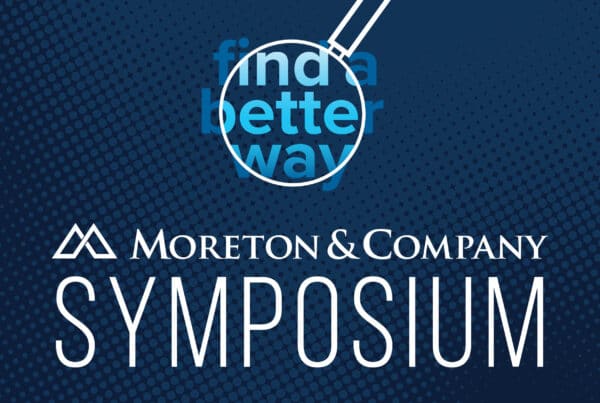
Public Entities Reevaluate Liability Risks as More Plaintiffs’ Attorneys Bypass State Tort Protections
As insurers look to shield themselves from potential “nuclear” verdicts (large settlements and judgments from sympathetic juries), many carriers are either limiting the capital they deploy within certain classes of business or tightening terms and conditions around certain tort-based liability claims. For example, assault and battery (A&B) or sexual misconduct/molestation (SML).
This targeted hardening in the market has made it difficult for some business classes to find desired coverages for their risk exposures. One of the most dramatically impacted groups has been public entities.
State and local public entities provide crucial community services such as schooling, law enforcement, and social care, and like any business or organization constantly engaged with the public, their activities put them at liability risk for unintentional harm to people and property.
To reduce this liability risk, certain legal doctrines and statutes grant qualified public agencies immunities from tort-based liability claims. In addition, many states also apply specific caps for damages.
For years, this system of available immunities and tort caps have worked in the state court system to create effective borders around prospective awards by a plaintiff against a public agency. With a solid history of controlled payouts and no fear of nuclear verdicts, many public agencies haven’t needed to seek high limits for liability insurance.
Now, however, plaintiffs’ attorneys are seeking ways to challenge the application of public entity immunity to create pathways to the federal court system, where there are not necessarily bright-line caps for damages.
This has made purchasing liability insurance a whole new ball game for public entities in states that have traditionally had significant limitations on the dollar amounts that can be awarded to a plaintiff.
Plaintiffs’ Attorneys Bypassing Tort Protections
Tort protections for public entities are determined on a state-by-state basis and typically serve as the first level of defense that public entities will deploy if a claim for damages is filed against them.
In addition to granting immunity from tort-based liability claims, many states also apply specific caps for damages, which legislators will adjust over time and in line with inflation. Like the individual tort claims legislation, the caps for damages vary by state.
Certain states, like Arizona, Alaska, California, Connecticut, Hawaii, Illinois, Michigan, Virginia, Washington, New York, and New Jersey offer no legislatively effected damage caps for public entities facing tort-based liability claims. Meanwhile, other venues like Alabama, Colorado, Texas, and Florida have significant damage caps on what could ultimately be levied upon and paid by a public agency – on both a per-person and per occurrence basis.
One of the common tactics plaintiffs’ attorneys use to bypass state tort protections is making novel civil rights assertions under the U.S. Constitution. This strategy allows cases to be heard in federal court where there are not necessarily bright-line caps for damages, and plaintiffs’ counsel can get their attorney fees awarded as part of those damages.
Public entity liability issues being heard in the federal court system is not a new phenomenon. For example, employment practice liability cases have a clear path into the federal system if a public agency is accused of violating federal employment laws.
What is new is heightened media attention around civil rights concerns, and the media’s focus on plaintiffs’ attorneys using Section 1983 to broaden what type of action can get into the federal courts. Section 1983 of Title 42 of the U.S. Code provides an individual the right to sue state government employees and others acting “under color of state law” for civil rights violations under certain circumstances.
For example, if a public K-12 school district is involved in a sexual abuse claim, there are elements of Section 1983 that could apply and create a civil rights violation. This is called “state-created danger,” and it generally applies if there were affirmative, culpable acts that exposed individuals to a specific danger and resulted in harm. That is, it requires more than mere negligence.
Although this approach to avoiding state tort caps has been around for the past decade, it’s starting to pick up steam with the alignment of more successful outcomes, social inflation, and the escalation of claim severity trends, especially around sexual abuse.
What Can Public Entities Do?
For public entities, awareness of this trend allows for some proactive preparation, including the following:
Early Defense Preparation. Public entities that are aware of the possibility of such claims can prepare for a prospective defense within the federal system. This gives public entities more control over the direction and the narrative of the early stages of their defense strategy, as well as how they prepare their evidence, discovery, and even their defense counsel selection. Suppose there’s the potential for a constitutional rights violation or a civil rights federal environment. In that case, public entities will need a defense attorney who is familiar with the application of federal laws.
Selection of Liability Insurance. From a buyer’s perspective, the risk of a nuclear verdict influences the assessment, selection, and purchase of appropriate liability limits to protect an agency. Public agencies residing in what have historically been relatively well-protected tort cap venues may not have traditionally purchased significant limits of liability. However, because of this increasing trend, we’re now seeing public agencies request options for increased limits, especially for law enforcement.
Collaboration with Underwriting & Claims Adjusters. For underwriters, much of the calculation to establish premium cost is based on the historical loss data available. If data has been primarily developed out of a single court system and then there’s a migration toward a different court system that allows for increased damages, actuarial models and selections must take that into consideration. Ultimately, the premiums they charge, and potentially the retentions they set, may need to change.
Takeaway
Although state tort caps help mitigate exposures and market insurance costs, the emerging issue of federal tort eroding immunity should be contemplated when selecting the appropriate liability limits at future renewals.


